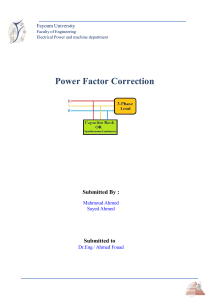(a) the complex power delivered by the source
advertisement
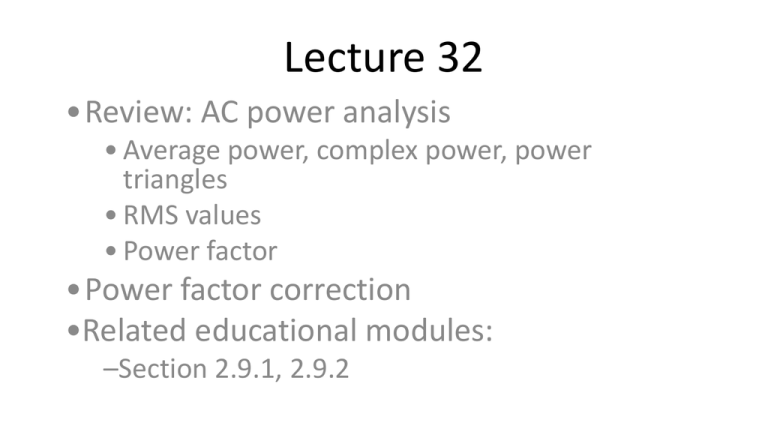
Lecture 32 •Review: AC power analysis • Average power, complex power, power triangles • RMS values • Power factor •Power factor correction •Related educational modules: –Section 2.9.1, 2.9.2 AC power analysis • Average power: • Average power in terms of RMS (or effective) values: • Complex power: Power triangles • Complex power (rectangular form): • Real (average) and reactive power: • Presented graphically: Power factor (pf) • Power factor: • Load impedance: V ZL I Z L V I Z L v i Example 1 For the circuit below, determine: (a) the complex power delivered by the source (b) the average power delivered by the source • • • • • Outline problem on previous slide: 1. find equivalent impedance 2. find source current 3. complex power = VI*/2 4. Average power = (Vm*Im/2)*cos(thetavthetai) (a) Determine the complex power delivered by the source (b) Determine the average power delivered by the source Effect of pf on power delivery • If v - i 0, we have some reactive power that is not consumed by the load – The current provided to the load is higher than necessary – Results in additional power dissipated during delivery – Power companies don’t like this! Power factor correction • Power companies may require that users maintain a minimum power factor – e.g. pf > 0.9 • Most large loads are inductive in nature – e.g. inductive motors • Power factor correction may be necessary – The approach must be inexpensive & simple to implement • Adding a capacitor in parallel with the inductive load will increase the power factor Power factor correction – continued • We have an inductive load with some power factor cos1: • The power triangle is shown below: Power factor correction – continued again • We can increase the power factor by adding a capacitor in parallel with the load: • The power triangle then becomes: I V + - ZL ZC Example 2 – power factor correction For the circuit below if (a) Determine the power factor (b) Re-design the circuit so that pf = 1 Example 2 – Determine pf Example 2 – Re-design circuit so that pf = 1

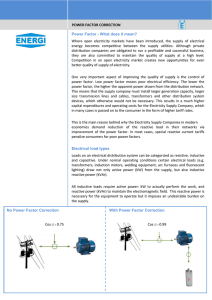
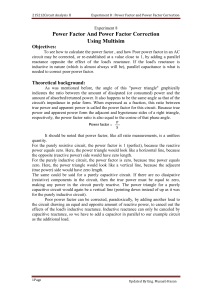



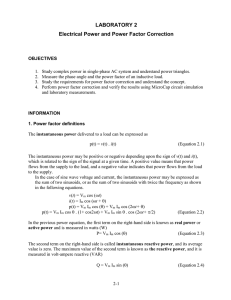
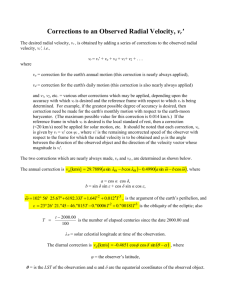

![Sample_hold[1]](http://s2.studylib.net/store/data/005360237_1-66a09447be9ffd6ace4f3f67c2fef5c7-300x300.png)

